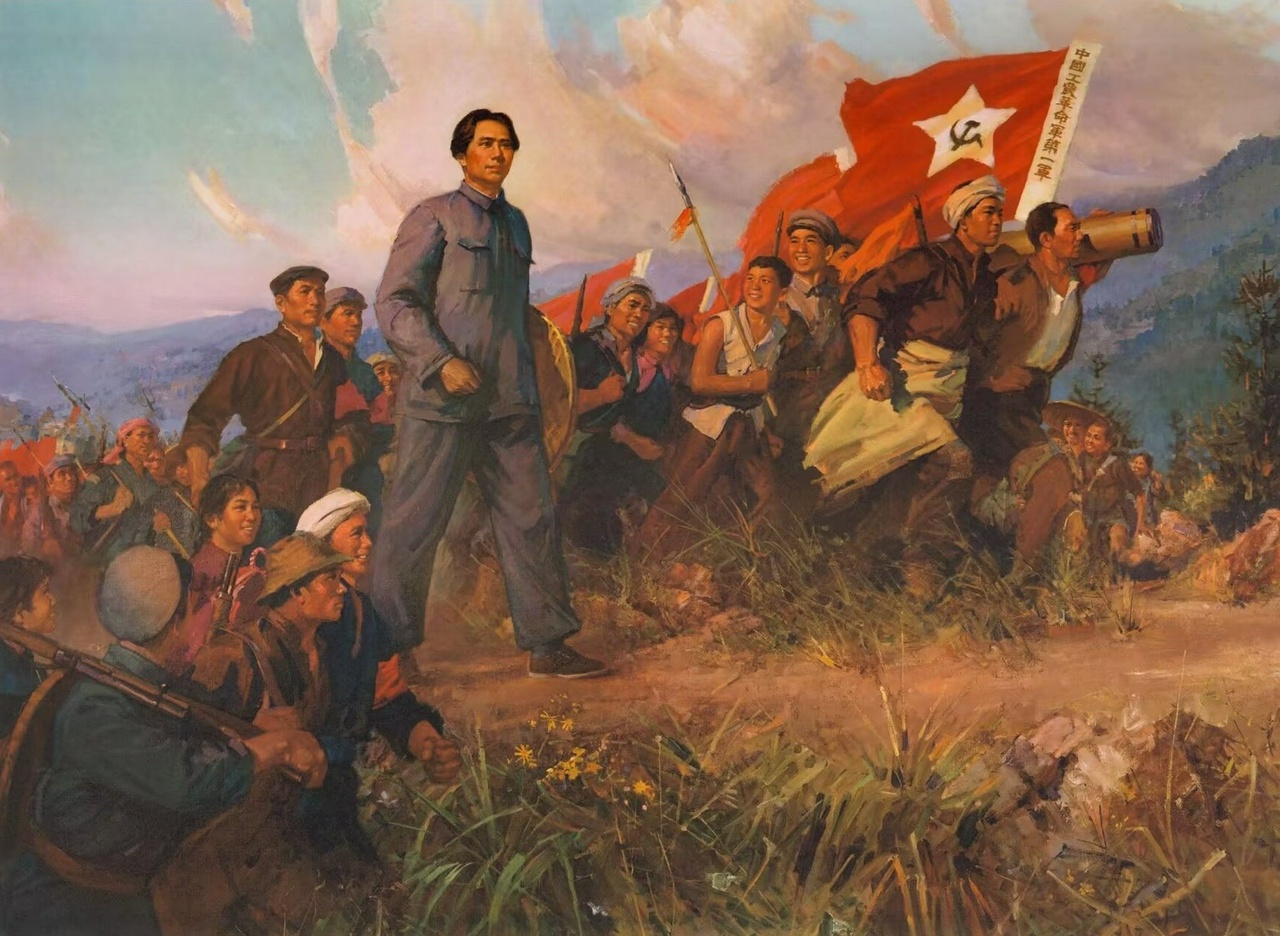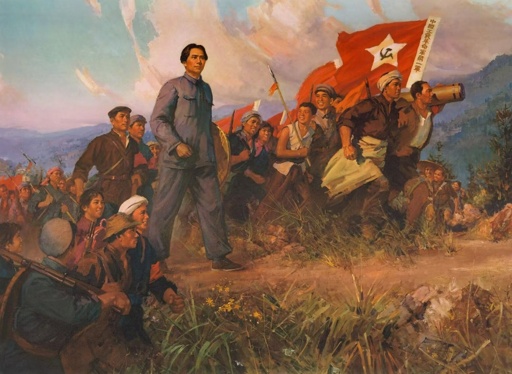
One of the major problems of revolutionary organizing has always been the contradiction between building movements of the broad masses, and those movements being led by a relatively small, disciplined and unified vanguard. How does a revolutionary organization, based on democratic centralism and united around a Marxist-Leninist program, mobilize the masses far beyond its own membership? The answer to the question is a method of leadership used by all communists from the Bolsheviks onward, called the mass line. Mao Zedong’s short essay, “Some Questions Concerning Methods of Leadership” is a key, systematic explanation of the mass line in Marxist-Leninist theory.
After the Yan’an Rectification Movement launched in 1942, cadre education was given special attention. As a result, many of Mao’s articles from the period in Yan’an are particularly clear and concise. “Methods of Leadership,” from June 1943, is no exception. Along the lines set out by the 1942 Rectification Movement, Mao’s aim is “To combat subjectivist and bureaucratic methods of leadership,” by promoting “scientific, Marxist methods of leadership.” The lessons distilled in this short essay are drawn from Mao’s experience leading the Autumn Harvest Uprising, the Chinese Soviet Republic, and the Long March.
Mao’s argument
“There are two methods which we Communists must employ in whatever work we do,” Mao explains. “One is to combine the general with the particular; the other is to combine the leadership with the masses.” This is Mao’s first point.
Elaborating, Mao goes on to say, “In any task, if no general and widespread call is issued, the broad masses cannot be mobilized for action. But if persons in leading positions confine themselves to a general call – if they do not personally, in some of the organizations, go deeply and concretely into the work called for, make a break-through at some single point, gain experience and use this experience for guiding other units – then they will have no way of testing the correctness or of enriching the content of their general call, and there is the danger that nothing may come of it.”
Too often those who claim to be revolutionaries stop short at the general call, but don’t go to the masses to organize and mobilize them. They broadly proclaim, “We need socialism!” but fail to link the call for socialism with the masses’ felt needs and day-to-day struggles in a practical way. Then they fall into pessimism and blame the masses when they fail to take up their ideas. Mao, instead, suggests that we use the mass line.
Mao says that “However active the leading group may be, its activity will amount to fruitless effort by a handful of people unless combined with the activity of the masses.” In other words, the broad masses have to be drawn into the struggle. “On the other hand,” Mao explains, “if the masses alone are active without a strong leading group to organize their activity properly, such activity cannot be sustained for long, or carried forward in the right direction, or raised to a high level.” This is the problem we see with spontaneous uprisings and rebellions. They burn bright and hot and are a clear demonstration of the people’s righteous anger, but, without revolutionary leadership, they aren’t sustainable and eventually they burn out.
“The masses in any given place are generally composed of three parts, the relatively active, the intermediate and the relatively backward. The leaders must therefore be skilled in uniting the small number of active elements around the leadership and must rely on them to raise the level of the intermediate element and to win over the backward elements.” This is an essential point. The relatively active, or advanced, are the people who want to fight back against their exploitation and oppression. They may not yet be Marxist-Leninists, but they see that things have to change and that the route to change is through struggle. These are the people that communists must find and organize with, shoulder to shoulder. By fighting together with the advanced and summing up our experiences, we can work to win them over to Marxism-Leninism.
By relying on these advanced fighters, the broad, intermediate elements can be pulled into the struggle, and many of them can be raised to the level of the advanced. The intermediate are a much larger section of the masses, not active, but generally aware that things are bad and shouldn’t be like this. The advanced fighters show them the power of active struggle, and can draw them into those struggles.
Finally, there are the backwards elements. These are the people who carry water for the class enemy among the people. They have all kinds of backwards ideas, and promote those ideas among the people. Some of them may be won over while others must be isolated.
The important point to take away from this breakdown of “advanced, intermediate and backwards” is that revolutionaries should focus their attention and energy on the advanced, active fighters. By doing that, the effects of their work will ripple outwards to the broad masses like waves from a pebble tossed into a pond.
Finally, Mao links the mass line to the Marxist theory of knowledge, explaining how we learn through practice, moving from a lower to a higher level, together with the masses.
“In all the practical work of our Party, all correct leadership is necessarily ‘from the masses, to the masses’. This means: take the ideas of the masses (scattered and unsystematic ideas) and concentrate them (through study turn them into concentrated and systematic ideas), then go to the masses and propagate and explain these ideas until the masses embrace them as their own, hold fast to them and translate them into action, and test the correctness of these ideas in such action. Then once again concentrate ideas from the masses and once again go to the masses so that the ideas are persevered in and carried through. And so on, over and over again in an endless spiral, with the ideas becoming more correct, more vital and richer each time. Such is the Marxist theory of knowledge.”
People learn through struggle, and we have to start from where people are at and advance them step by step. Through the course of struggle, we have to sum up our successes and failures, subject ourselves and our comrades to criticism and self-criticism, learn from and fix our shortcomings, and carry forward that which is proved correct through practice. Then we apply these lessons to our mass work as we move forward.
What does Mao mean by “concentrate” the ideas of the masses? This is an important point. A key ingredient to Mao’s mass line slogan of “from the masses, to the masses,” is Marxist-Leninist theory. It means using Marxism-Leninism to transform those ideas from “scattered and unsystematic ideas” into a focused strategy that can be implemented on the ground. It means taking the felt needs and demands of the masses, applying the science of Marxism-Leninism to understand the contradictions at work, and steering those felt needs and demands in a direction that brings the greatest number of people possible into conflict with the enemy.
Mao’s “Methods of Leadership” today
Today, we find ourselves in the particular position of having no true communist party in the United States. There is no organized and advanced detachment of the entire working class, whose cadre are what Stalin called “the generals of the proletarian army.” We are therefore faced with the central task of building just such a party. But as Mao tells us, “A leading group that is genuinely united and linked with the masses can be formed only gradually in the process of mass struggle, and not in isolation from it.” In other words, party building is impossible to accomplish apart from serious mass work.
This means we must understand and utilize the mass line every single day. Whether we are working in the trade unions, struggling for Black and Chicano national liberation, or fighting for a free Palestine, among many other important struggles, we are working to accomplish three objectives. As the Political Program of the Freedom Road Socialist Organization puts it, “Our party building work should be placed in the context of our three objectives: To win all that can be won while weakening our enemies; Raise the general level of consciousness, struggle, and organization in our immediate battles; and Win the advanced to Marxism-Leninism, thus building revolutionary organization.”
The only way to build an organization comprised of the “generals of the proletarian army” is to recruit the best and most dedicated fighters in the people’s struggles, learn together with them through the crucible of day-to-day battles against the class enemy, and through the summation of those experiences, demonstrate in practice the power of Marxism-Leninism.
#RevolutionaryTheory #RedReviews #Mao
From Fight Back! News via this RSS feed


